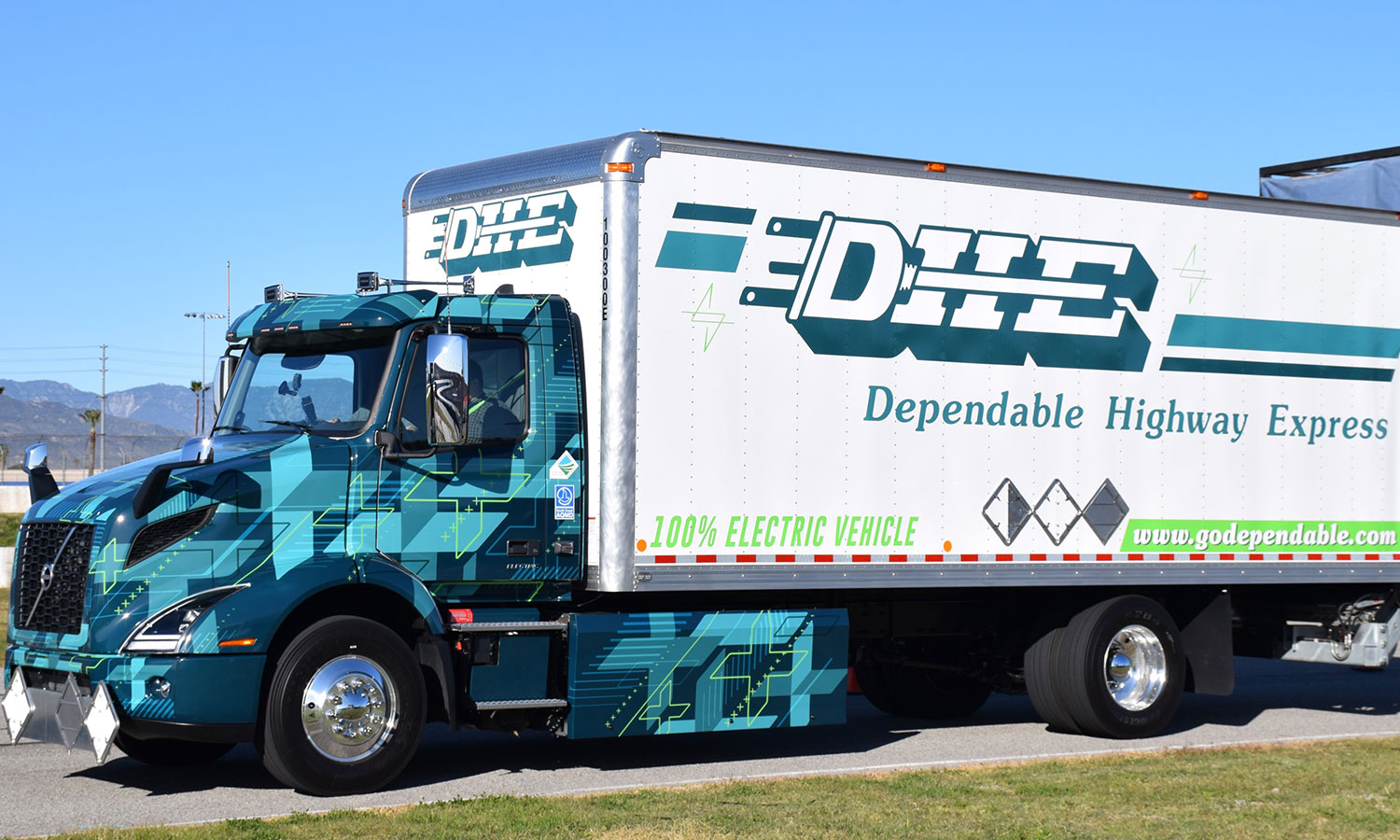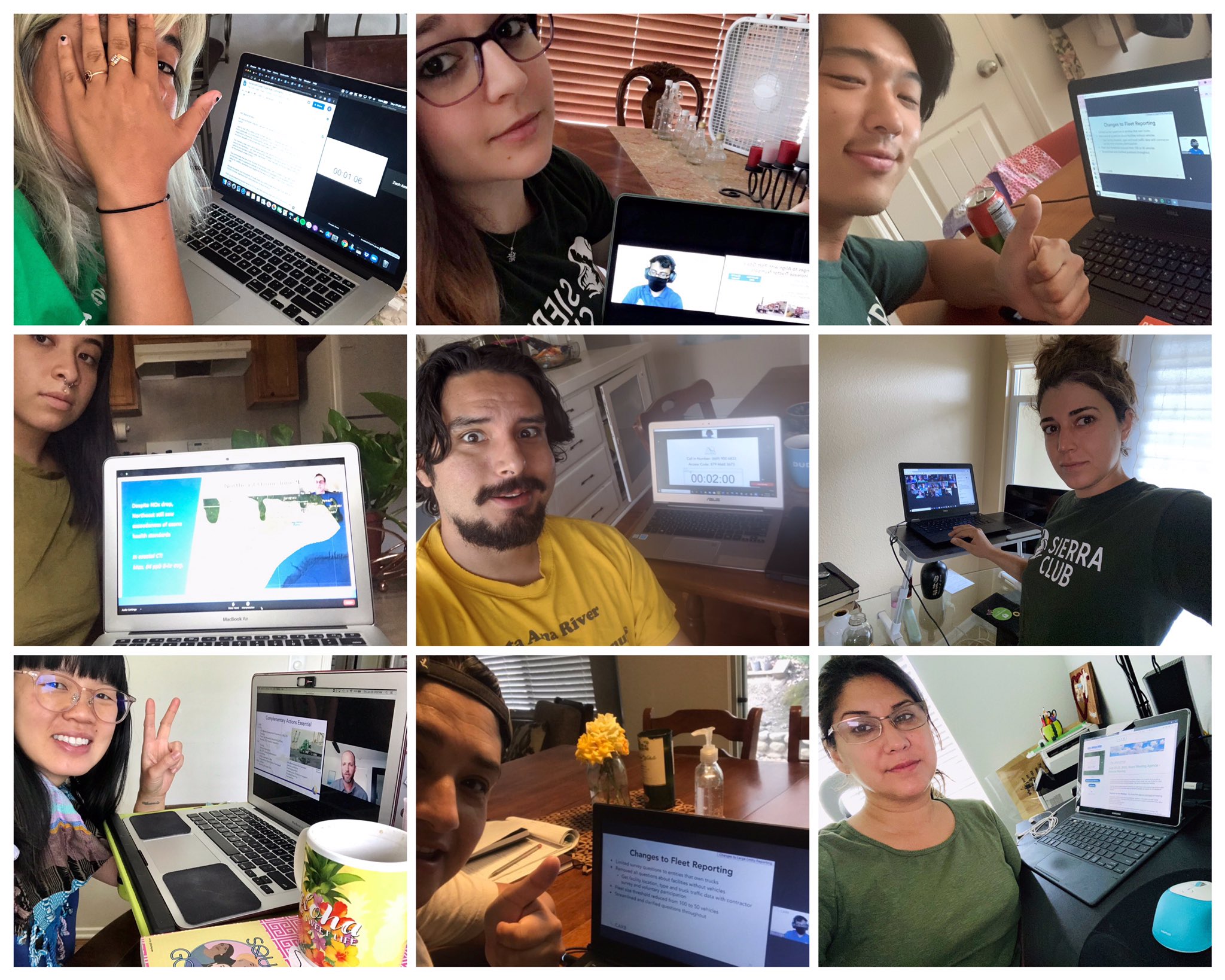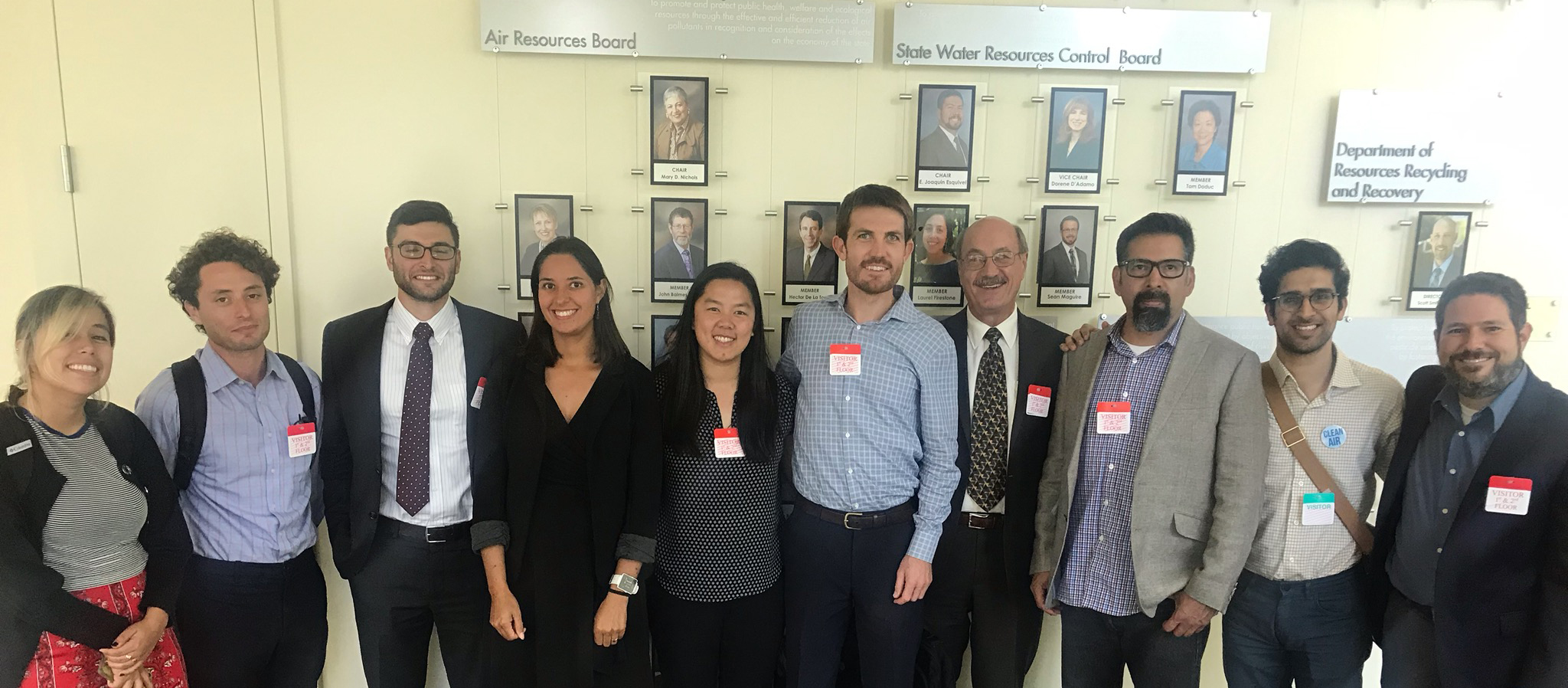
Photo by Jimmy O'Dea
California just adopted a rule that will deliver a robust supply of zero-emission trucks in the state—and very likely to regions beyond. The California Air Resources Board (CARB), the state agency that regulates tailpipe emissions, unanimously voted to adopt the Advanced Clean Trucks (ACT) rule on June 25, after six hours of overwhelmingly supportive public testimony delivered virtually.
The rule is the first in the nation—and the world—that requires truck manufacturers to produce electric medium- and heavy-duty trucks. By including large pickup trucks, delivery trucks, and semi trucks, the rule will put the entire freight industry on a path toward full electrification and much lower tailpipe pollution.

After joining a virtual community meeting with 50 people, volunteers and staff with the Sierra Club’s My Generation Campaign showed their support for the Advanced Clean Trucks Rule through a 6+ hour virtual board meeting that ended with the passing of the ACT. | Photo by Kristiana Faddoul
With more than 90 percent of Californians living in areas impacted by unhealthy levels of air pollution, zero-emission trucks are a public health necessity—making sure they are on California roads will save lives, and importantly, they will save lives in communities next to high-traffic, polluting corridors.
Black and Brown Communities living near ports, warehouses, and freeways are exposed to such high rates of heavy-duty vehicle pollution that physicians have labeled these areas “diesel death zones.” These communities are disproportionately burdened with harmful health impacts compared to white communities, including increased risk of asthma attacks, lung cancer, heart attacks, strokes, and premature death.
This major victory for clean air and environmental justice has been three-and-a-half years in the making, but it almost ended in failure last December. Before a pivotal CARB informational hearing, activists thought that the agency was going to move ahead with a weak proposal that didn’t push the envelope or deliver significant numbers of trucks or pollution cuts. So we did what Sierra Club volunteers and staff are best at: We organized to push for a bolder rule.
Activists from across the state, pulled together by our informal coalition of more than 40 organizations representing labor, environmental justice, health organizations, environmental groups, and zero-emission industry partners, arrived in Sacramento for the December board meeting prepared to persuade. Together, we called for a bolder rule and, thankfully, the board concluded the hearing by instructing staff to do more work to create as strong a rule as necessary before bringing it back for a vote this June.
Then the work began anew.
Sierra Club California staff and our lead chapter volunteer for electric vehicles, Ray Pingle, coordinated the Electric Trucks Now coalition to meet with CARB staff, review data, and press for a more aggressive rule. The coalition submitted comment letters that outlined the public health, environmental, and economic benefits of zero-emission trucks.
We met with board members, sometimes more than once. We got creative on social media and kept up a drumbeat in traditional media to keep the public pressure on. Some collected letters from supportive legislators, while others collected letters from supportive local officials and even governors from other states.
The CARB staff came back with a much stronger proposal in February, just before the state went into COVID-19 lockdown.
The lockdown created yet another round of headaches. Regulated industries began demanding that all regulations stop. Activists had to turn their attention to pushing back on those demands until the governor’s advisors publicly announced that rules that protect health would not be suspended or rolled back.
By the time the June board meeting arrived, nearly everyone had heard the coalition’s argument that CARB needed to adopt a strong technology-forcing policy -- meaning a policy that sets ambitious standards to spur the zero-emission truck market to innovate, slash toxic emissions, and save lives.
A major challenge was that truck manufacturers and fossil fuel producers were determined to maintain the status quo (continuing the prevalence of toxic air pollution) and pressed CARB to delay the rule and set even lower production targets. Nevertheless, the power of a strong coalition prevailed. Some of the most vocal activists calling for a bolder rule came from environmental justice groups, made up of frontline community members in Southern California’s Inland Empire. Close collaboration between Sierra Club volunteers, staff, and activists throughout the state also played a big role.

From left to right, advocates from Center for Community Action and Environmental Justice, BlueGreen Alliance, National Resources Defense Council, Sierra Club California, Union of Concerned Scientists, Moving Forward Network, Earthjustice, and Better World Group attend a CARB workshop in Sacramento to push for a bolder Advanced Clean Trucks rule (August 2019)
Truck manufacturers must produce electric trucks for the California market starting in 2024. The rule calls for an estimated 100,000 electric trucks by 2030 and an estimated 300,000 electric trucks in 2035.
CARB also signaled that it is firmly committed to achieving a complete turnover—100 percent—from diesel to zero-emission in medium- and heavy-duty vehicles by 2045, and earlier in certain market segments such as drayage trucks, refuse trucks, and government fleets.
The Advanced Clean Truck Rules rule won’t be the only policy that will clean up truck pollution in California. Other policy levers, such as more incentives and pollution rules for publicly owned truck fleets, must follow. But the ACT rule is a great first step. You might say, it’s the first act.